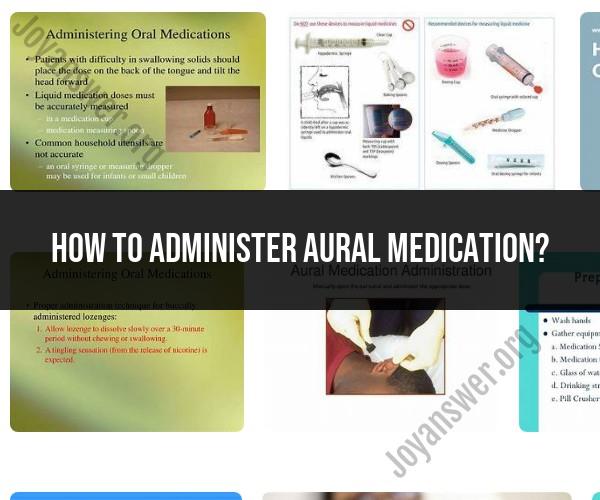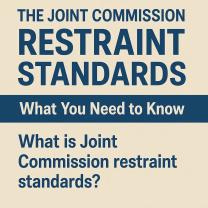How to administer aural medication?
Aural medication administration refers to the process of administering medication into the ear. This can be necessary for treating ear infections, earwax buildup, or other ear-related conditions. Here are general guidelines on how to administer aural medication:
1. Wash Your Hands: Before you begin, ensure that your hands are clean and dry. Proper hand hygiene is essential to prevent contamination.
2. Gather Supplies:
- Medication: Have the prescribed ear medication ready. Ensure that it is at room temperature unless otherwise specified by your healthcare provider.
- Clean Tissues or Cotton Balls: You may need these to wipe away any excess medication that may leak from the ear.
- Towel or Cloth: Place a towel or cloth under the ear to catch any drips and protect clothing or bedding.
3. Position the Person:
- If you are administering the medication to yourself, find a comfortable and stable position where you can tilt your head to the side to allow for easier access to the ear.
- If you are administering the medication to someone else, have them sit or lie down with their head tilted to the side, affected ear facing upward.
4. Warm the Medication (If Necessary): Some ear medications work best when they are at body temperature. You can warm the medication by holding the container in your hand for a few minutes. Always follow the specific instructions provided with the medication.
5. Clean the Ear (If Directed): If your healthcare provider has advised you to clean the ear before administering medication, use a clean, damp cloth or tissue to gently clean the earlobe and the area around the ear. Do not insert anything into the ear canal.
6. Administer the Medication:
- Hold the medication container in one hand.
- With the other hand, gently pull the earlobe of the affected ear upward and backward for adults or downward and backward for children (this helps straighten the ear canal).
- Hold the medication container close to the ear canal but do not insert it deeply. Administer the prescribed number of drops into the ear canal.
7. Maintain Position:
- Keep the head tilted to the side for a few minutes to allow the medication to flow into the ear canal.
- Gently place a cotton ball or clean tissue at the ear opening to catch any excess medication that may leak out.
8. Repeat as Directed: If you need to administer multiple drops or if the medication needs to be applied in both ears, follow the same process for the other ear.
9. Wash Your Hands Again: After administering the medication, wash your hands thoroughly to prevent any cross-contamination.
10. Follow Up: Follow any additional instructions provided by your healthcare provider, such as how often to administer the medication and for how many days.
Important Tips:
- Do not insert cotton swabs, fingers, or any objects into the ear canal, as this can push wax or debris further into the ear or cause injury.
- If you experience any discomfort, pain, or worsening of symptoms after administering the medication, contact your healthcare provider.
- Always use the prescribed medication and follow your healthcare provider's instructions carefully.
Aural medication administration should be done with care and attention to hygiene to ensure the safety and effectiveness of treatment. If you have any doubts or concerns about administering ear medication, consult your healthcare provider or a pharmacist for guidance.
Aural Medication Administration: Best Practices and Techniques
Aural medication administration is the process of administering medication to the ear. This can be done using a variety of methods, including ear drops, ointments, and creams.
When administering aural medication, it is important to follow best practices to ensure that the medication is delivered safely and effectively. Here are some tips:
- Wash your hands thoroughly with soap and water before and after administering medication.
- Clean the ear canal before administering medication. This can be done using a soft, damp cloth.
- Warm the medication to room temperature before administering it. This will help to reduce discomfort.
- Tilt the head to the side so that the affected ear is facing up.
- Gently pull the earlobe back and down to straighten the ear canal.
- Instill the medication into the ear canal.
- Keep the head tilted for 1-2 minutes to allow the medication to absorb.
- If using ear drops, you may need to plug the ear with cotton wool to prevent the drops from leaking out.
Safely Administering Medication to the Ear: Step-by-Step Guide
Here is a step-by-step guide on how to safely administer medication to the ear:
- Wash your hands thoroughly with soap and water.
- Clean the ear canal using a soft, damp cloth.
- Warm the medication to room temperature.
- Tilt the head to the side so that the affected ear is facing up.
- Gently pull the earlobe back and down to straighten the ear canal.
- Instill the medication into the ear canal.
- Keep the head tilted for 1-2 minutes to allow the medication to absorb.
- If using ear drops, you may need to plug the ear with cotton wool to prevent the drops from leaking out.
Tips for Effective Aural Medication Delivery
Here are some tips for effective aural medication delivery:
- Use the correct dosage. Be sure to follow the dosage instructions provided by your doctor or pharmacist.
- Administer the medication at regular intervals. For example, if you are using ear drops, you may need to administer them 3-4 times a day.
- Complete the full course of medication. Even if your symptoms improve, it is important to complete the full course of medication to prevent the infection from returning.
- If you have any questions or concerns, be sure to talk to your doctor or pharmacist.
If you have any difficulty administering aural medication, you may want to ask a friend, family member, or healthcare professional for help.












